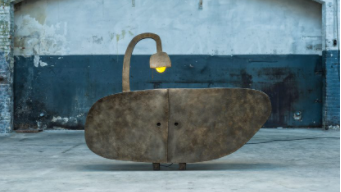Dutch furniture designer, Maarten Baas is one of the pioneers of Contemporary Kitsch design. His creations are something totally new and radical, colorful, playful and explicitly childish.

Image source:http://www.designcurial.com/news/profile-maarten-baas-4659176/
Who Is Maarten Baas?
Maarten Baas was born in 1978 in Arnsberg, West Germany. He studied at the school in Eindhoven, a breeding ground for the greatest number of active creative talents, such as Jurgen Bey, Hella Jongerius or Richard Hutten. After having studied design in Eindhoven, in the Netherlands and Italy, the Dutchman Maarten Baas is dedicated to the creation of unique pieces made by hand. Since breaking into the scene with his Smoke collection, Baas has been working with unconventional materials that ignore traditional limitations, which has led to the creation of Clay, a series of furniture made of synthetic plasticine. In 2005, he started a collaboration with Bas den Herder, which allowed to increase the scale of production of their works without losing the manufacture. The Roomservice gallery offers the first exhibition in this city by the Dutch designer, which will be open until January 31, 2009. This exhibition shows pieces from the Clay series, a line of furniture made with industrial clay.
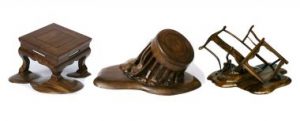
Image source: http://iloboyou.com/maarten-baas-organic-design/maarten-baas-organic-design-iloboyou4/
The skeleton, conceived to bring greater consistency to the structure, was coated and modeled by hand with synthetic clay, and was painted in eight colors: black, white, brown, red, yellow, blue, orange and green, to give it an industrial appearance. No type of mold was used in the production, which makes each element a unique example. A somewhat naive aspect and the surprise factor provided by the handcraft side, turned this project into a very commented success in his career. Clay was presented in 2006 at the International Furniture Fair in Milan. Throughout his career, Baas has presented at ICFF in New York, the Stedelijk Museum in Amsterdam, Victoria & Albert Museum, Design Museum in London which exhibited 18 pieces by Clay and last but not least, he was named Designer of the Year by Design Miami (2009). In particular, he is the youngest designer ever to be recognised as Designer of the Year during Design Miami.
Info source: https://www.elmundo.es/papel/2008/12/12/mujer/2559695.html
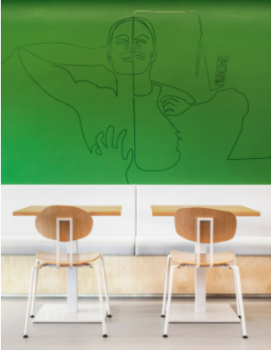
Image source: https://www.dezeen.com/2020/07/06/101-chair-maarten-baas-lensvelt-vdf-products-fair/
What About His Most Significant Works?
- The Clay Series
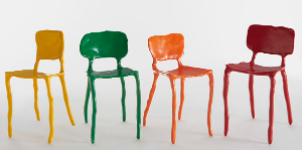
Image source: https://www.phillips.com/detail/maarten-baas/NY050412/116
The Clay series consists of pieces of furniture hand-formed out of synthetic clay. “Clay” furniture is form 2006 and Marteen wanted to make a naive chair. Literally clayed by hand. Every chair is unique and even thought there is a metal structure inside, they are all hand made. The chairs, which resemble childish models rendered in Play-Doh, are actually made of “synthetic clay” molded over a metal frame. They completely go against the idea of perishability. Plus, scientists believe that synthetic clay may actually help rid the environment of radioactive waste. When this is added to the fact that “all pieces are modeled by hand… making each piece unique,” the Maarten Baas chairs seem at least sustainable by definition, but perhaps not so sustainable when up against the more modern, colloquial meaning.
- The Empty chair

Image source: https://designswelove.com/2011/05/27/empty-chair-maarten-baas-amnesty-international/
The Empty Chair designed by Maarten Baas is about five meters tall and was presented for the first time during the 50th anniversary of Amnesty International on May 28, 2011 in Pakhuis De Zwijger in Amsterdam. Amnesty International proposed to Maarten Baas to design a piece to support their campaign against the increased suppression of writers, journalists, artists and activists. In 2010, Liu Xiaobo was awarded with the Nobel Peace Prize for his peaceful battle for fundamental human rights. Liu Xiaobo could not accept the prize in person, because he was in jail serving a 11 year imprisonment for ‘undermining of the state’. Therefore, The Empty Chair of Liu Xiaobo became a symbol for repression. It is a symbol for Liu and many others who are in jail for expressing their opinion.
- The Smoke Series
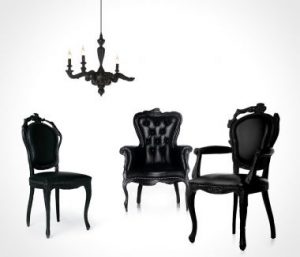
Image source: https://mikeshouts.com/smoke-furniture-collection-by-maarten-baas/. Author:
For his graduate collection – the Smoke furniture range – Baas literally set fire to old chairs and tables before coating them in an epoxy resin to preserve the charred remains. As a student, he invented the original technology of burning wooden furniture to give it originality and novelty. Bass himself explained his idea in this way: “I was always amazed at the reason why we buy things and do not touch them, because we want things to remain unchanged, why do we think that symmetry and smoothness are beautiful? What happens if I try to change the face of things, for example by shooting and burning? The thing has acquired a character, has received a new aesthetic, a different meaning, becoming more emotional and personal. The furniture is burned, finished with transparent epoxy resin to maintain the shape and duration of the work. By stripping away ornament, Baas diminishes the hands-off preciousness of design and brings the objects closer to their true purpose, as common tables and chairs.
How Can We Identify Baas’ Design?
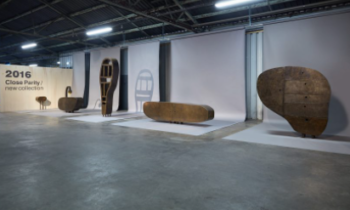
Images source: https://www.dezeen.com/2017/03/03/close-parity-extruded-sketches-furniture-collection-maarten-baas/
Baas’ designs straddle the boundary between art and design and are known for their conceptual, humorous, rebellious and theatrical character. This disruptive and provocative approach, symptomatic of a refusal of perfection in design, was positively welcomed by museums and collectors who immediately contested his pieces. The rebellious nature of his first series then also characterized the subsequent work. The Dutch designer continues to create works with the autonomy of an artist, experimenting freely from his studio in the south of Holland and sending his production all over the world. “For every piece of furniture, I look for a direct and spontaneous aesthetic. An optimistic vein and a certain humor also often come into play. I like it to be light and often conceptual“. Despite the recognizable style, its production is varied. Reflecting on his stylistic approach, Baas states: “I always do what comes to mind. I do not have a specific strategy or style that I try to keep. I follow the intuition“. Surprise and the unexpected are the fundamental traits of his appeal.
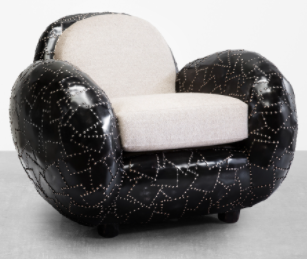
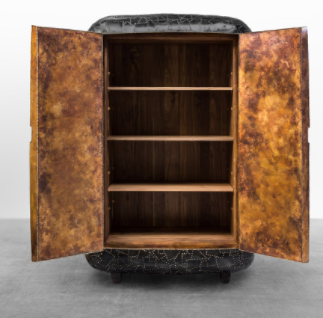
Info sources:
http://iloboyou.com/maarten-baas-organic-design/
https://www.vogue.it/news/notizie-del-giorno/2016/04/11/maarten-baas/?refresh_ce=
http://www.dedeceblog.com/2011/05/26/the-empty-chair-by-maarten-baas-for-amnesty-international/
https://inhabitat.com/inhabitots/maarten-baas%E2%80%99-clay-childrens-chairs/
